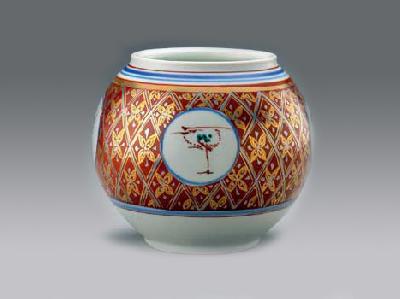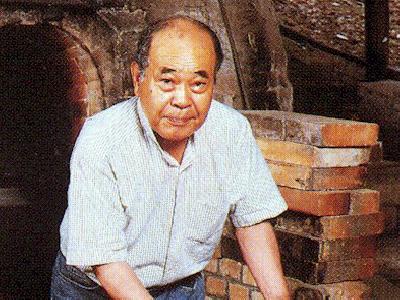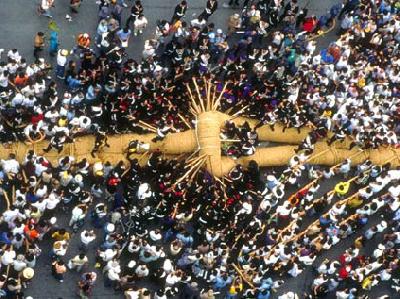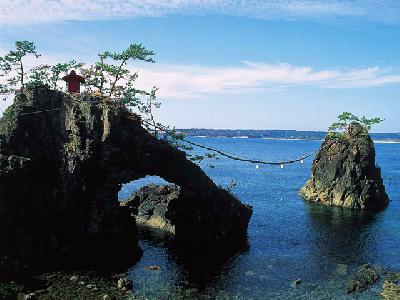|
Tatsuzo Shimaoka was born in 1919, in Tokyo, and studied ceramics at Tokyo Industry University. In 1996, he was designated as a Living National Treasure because of his work in 'jomon zogan'.
Jomon-zogan is a ceramic technique invented by Shimaoka; a pot is patterned using a thin rope, then painted with white 'deisho' (mixture of pot clay and water). After drying, the pot's surface is shaved with a plane. Then, the white Deisho remains in the impressed areas and the jomon pattern appears.
After he was demobilized, Shimaoka studied under Shoji Hamada and, in 1953, he established his own kiln. His belief was to have 'his own distinctive style, not an imitation of others'. He learned through trial and error, and he integrated the jomon technique with zogan, a popular Korean technique. His work is practical and beautiful, unique with his identity.
Jomon-zogan is a ceramic technique invented by Shimaoka; a pot is patterned using a thin rope, then painted with white 'deisho' (mixture of pot clay and water). After drying, the pot's surface is shaved with a plane. Then, the white Deisho remains in the impressed areas and the jomon pattern appears.
After he was demobilized, Shimaoka studied under Shoji Hamada and, in 1953, he established his own kiln. His belief was to have 'his own distinctive style, not an imitation of others'. He learned through trial and error, and he integrated the jomon technique with zogan, a popular Korean technique. His work is practical and beautiful, unique with his identity.
| [+ADDRESS] | 
|
















